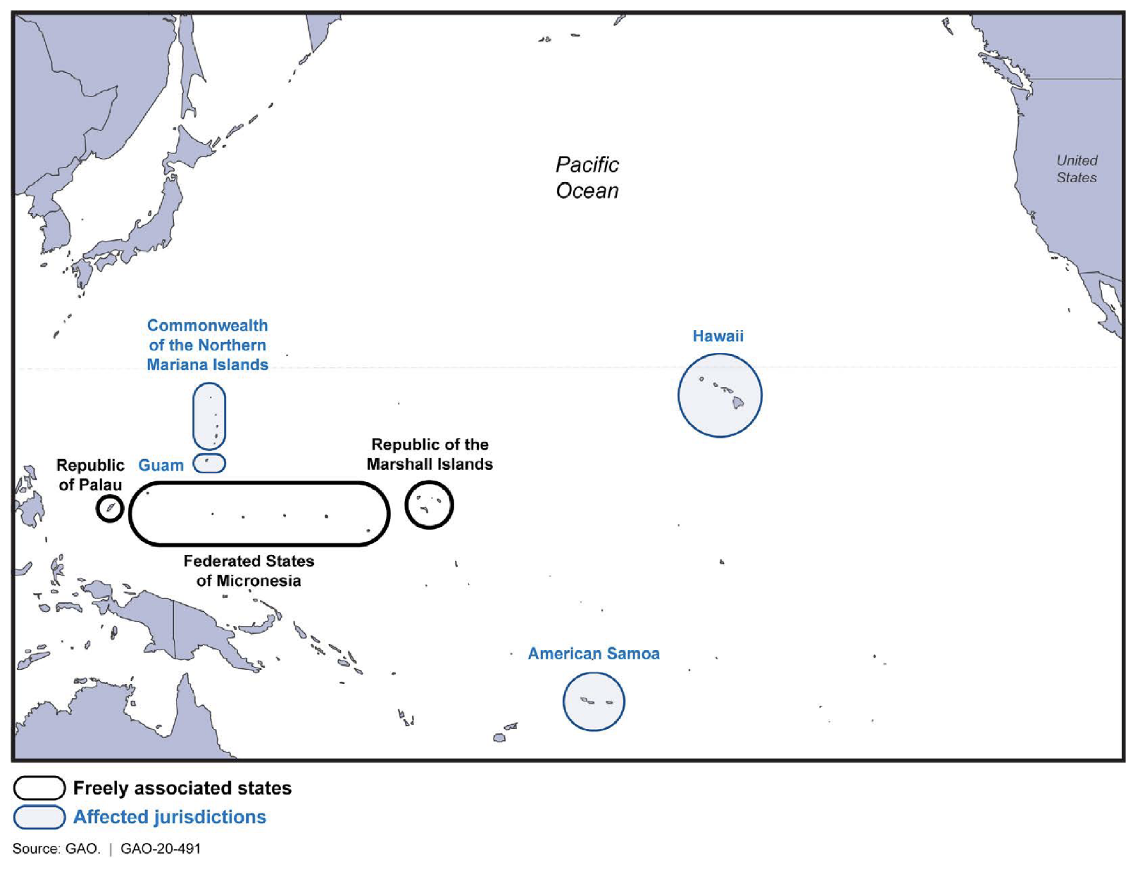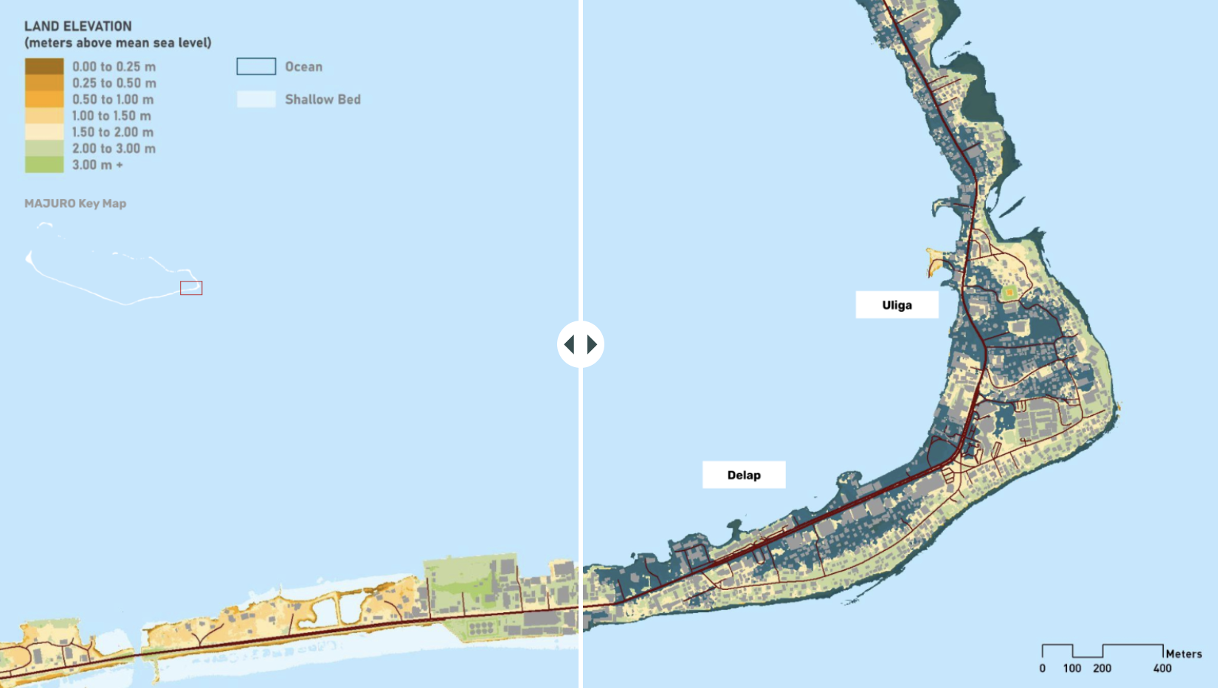Growing Climate Risk in Pacific Islands and its Implications
By Soyoung Oh
Asian American and Pacific Islander Heritage Month gives us a great opportunity to think about the contributions of Pacific Islander Americans to the United States. The population of Native Hawaiian and other Pacific Islanders has increased by about 30% (from 1.2 million to 1.6 million) between 2010 and 2020. The majority of American Pacific Islanders (as defined by the Census) are from Hawaii, Samoa, Guam, Tonga, or Fiji.
However, there is a group of people from small Pacific islands in the country who are less visible to the eyes of the Census: citizens of Micronesia, the Marshall Islands and Palau. The three countries, as Freely Associated States (FAS) through bilateral Compacts of Free Association with the United States, may live, study, and work in the United States for an unlimited length without visas. In exchange, the United States retains its responsibility for the defense and exclusive access to the middle of the Pacific Ocean, which is one of the key strategic outposts for the US military. The trend of Freely Associated States’ citizens migrating to the US is likely to continue especially in the face of climate change.
The relationship between the Freely Associated States and the United States has stood for about 40 years since 1982-83. 94,000 FAS citizens have migrated to work and study in the United States (as of 2020). Between 2009 and 2018, the population of FAS migrants in the US increased by approximately 68%, mostly in Hawaii, Guam, and Washington. FAS citizens are migrating to the United States to find better education and jobs despite their ineligibility to receive most federal public benefits like Medicaid.
Locations of Freely Associated States
Freely Associated States Migrant Populations in U.S. Areas, 2013-2018
Climate Risk in Freely Associated States
Micronesia, the Marshall Islands, and Palau are all facing an increasing risk of sea-level rise. In 2019, Hilda Heine, then President of the Marshall Islands, strongly voiced that the country is facing a national climate crisis with rising sea levels. Compared to the global average, the western Pacific Ocean’s sea levels are rising two or three times faster. The US Geological Survey showed that the Marshall Islands and most atolls will become uninhabitable with insufficient freshwater and frequent droughts by mid-century.
As shown in the map below, Majuro, home to about half of the Marshall Islands’ population, is highly likely to face an existential threat even with a 1m sea level rise. According to a World Bank estimate, 2m of sea level rise would put the entirety of Majuro’s building stock at risk of permanent inundation or high risk of coastal flooding.
Areas at risk of inundation from 1m sea level rise in the urban heart of Majuro atoll, the Marshall Islands
(in the right-hand side of the picture – blue parts are inundated areas)
The Federated States of Micronesia, which comprises more than 600 islands, is facing similar threats as the Marshall Islands, although there are variations in elevation among islands. Micronesia could also face food security issues due to droughts, extreme heat, and flooding.
Palau, which has the smallest population among Freely Associated States, is relatively wealthier than Micronesia or the Marshall Islands. However, as most of the population and infrastructure are in coastal areas, Palau is also highly vulnerable to extreme high tides and coastal erosion.
Next steps for the US-FAS relationship
As the Biden administration renegotiates the COFA’s financial provisions, which will expire soon, Washington is considering $6.5 billion in direct economic assistance over 20 years for FAS. The amount is almost identical to what has been provided to FAS between 1987 and 2024– which amounted to $3.7 billion for Micronesia, $2.5 billion for the Marshall Islands, and $803 million to Palau.
Details about how $6.5 billion would be spent are not released yet. However, after paying for each island’s education expenditures and social services, only a relatively small amount would be left for adaptation for each country. The Marshall Islands’ Adaptation Communication report shows that it would need 4-13% ($16-58 million per year) of its projected GDP in the 2040s.
The Biden administration made efforts to bolster the conversation between the United States and the Freely Associated States by appointing Ambassador Joseph Yun as Special Presidential Envoy for Compact Negotiations and hosting the first-ever Pacific Partnership Strategy last year. Despite this progress, it remains important to pay careful attention to the vulnerabilities of Micronesia, the Marshall Islands, and Palau and consider ways to fulfill their adaptation finance needs.
Soyoung Oh is a Junior Research Fellow at the Climate Policy Lab.




